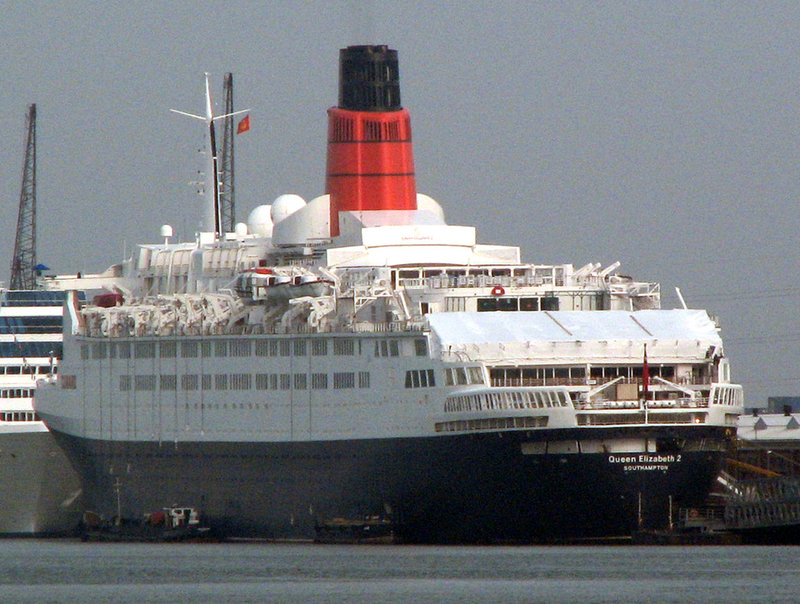SHIP PROFILE
New uses for old cruise ships
Whilst most cruise ships are either sold to new owners or end up in scrapyards, some cruise ships get to live a second, completely different life. From hotels to housing communities, Ilaria Grasso Macola lists some of the weird and wonderful uses for old cruise ships.
Whilst most cruise ships are either sold to new owners or end up in scrapyards, some cruise ships get to live a second, completely different life. From hotels to housing communities for cryptocurrency enthusiasts, Ilaria Grasso Macola lists some of the most bizarre uses for old cruise ships.
Once they outlive their current usefulness, cruise ships are either sold to different owners, refurbished, given a new name and taken for a second spin or end up in the scrapyard, where they are dismantled and sold for scrap.
However, this is not the case for all ships. Sometimes ships can be converted for a diverse range of applications, including hotels, hospitals and even artificial reefs.
Below, we list some of the most interesting uses for old cruise ships.
The Queen Mary and Queen Elizabeth Hotels
After 31 years of service, British cruise line operator Cunard Line decided to retire its Queen Mary cruise ship in 1967 with a final trip to southern California, US.
One of Cunard Line’s most famous vessels, Queen Mary had five dining areas, two cocktail bars, a swimming pool and even a small hospital. Between 1936 – the year of its maiden trip – and 1967, the vessel carried more than two million passengers, in addition to the 810,000 military personnel transported during WW2.
After its retirement, the vessel – purchased by the city of Long Beach – was transformed into a hotel, tourist attraction and events venue, with more than 50 million visitors in the last 54 years.
Another Cunard Line cruise ship, the Queen Elizabeth II, went in the same direction. Launched in 1967 and retired in 2008 with a final trip between New York and England, the Queen Elizabeth II was the longest-serving ship in Cunard Line’s history.

The Queen Elizabeth II. Credit GrahamAndDairne
Just like Queen Mary, the vessel – which was 294m long and weighed 70,000 tonnes – was used as a troop carrier during the Falklands War. In 2008, Queen Elizabeth II was shipped to Dubai, where it was refitted and transformed into a hotel. Now docked at Port Rashid, the ship is the only floating hotel in Dubai, with 215 hotel rooms, six dining venues and a theatre.
More and more cruise ships are now being turned into hotels. During the Sochi 2014 Winter Olympics, several cruise ships were chartered in the Russian host city to welcome guests and athletes participating in the winter games.
Eight vessels, including three cruise ships, were moored at the port of Sochi. The cruise ships included Grand Holiday – at the time owned by British-American and Spanish cruise line operator Ibero Cruises and now part of Seajets’ fleet – alongside Louis Cruise Line’s Louis Olympia and Thomson Cruises’ Thomson Spirit.
MSC’s Splendid becomes a Covid-19 hospital in Italy
Between the end of February and the beginning of March, the Covid-19 pandemic hit Europe, with its epicentre situated in northern Italy.
To face the emergency, global cruise line operator MSC Group converted its Splendid cruise ship into a floating hospital specifically equipped to assist Covid-19 patients.

The floating hospital in Genoa. Credit: Ports of Genoa
The group started working on the project in March, coordinating with health and civil protection authorities in the Italian region of Liguria.
Stationed in the Port of Genoa’s ferry terminal, the floating hospital was created to increase the region’s hospital bed capacity, as well as receive patients from other parts of the country. The vessel featured accommodated 400 beds, a heliport and an area for healthcare professionals and crew.
Emergency housing for hurricane victims
Hurricane Katrina, which hit the south-eastern coast of the US in August of 2005, was one of the most devastating hurricanes to ever hit the country, killing more than 1,800 people and causing billions of dollars in damage.
To help evacuees, Carnival put forward two cruise ships, Ecstasy and Sensation, to temporarily house thousands of people.
As reported by the New York Times, the Federal Emergency Management Agency (FEMA) – the US Government’s agency for disaster relief coordination – paid Carnival $192m for a six-month charter contract for three vessels. FEMA also paid $10m for a fourth ship.
According to the New York Times, problems arose when two of the vessels remained empty because evacuees did not want to board them.
“People who are displaced want a sense of normalcy," Brookings Institution refugee studies expert Roberta Cohen told the newspaper at the time. "This had big red letters on it. There's something artificial about a cruise ship. It's on the water. It's not like home."
Ecstasy and Sensation were moored in New Orleans, where they housed almost 4,000 city workers, including police officers and firefighters and their families.
Sinking cruise ships to create an artificial reef
In June 2019, a Delaware State Division of Fish and Wildlife contractor sunk American Cruise Lines’ American Glory cruise ship to turn it into an artificial reef.
The 61m American Glory was not the first vessel to be sunk, but it is part of Delaware’s Government 14 permitted artificial reefs, located between Delaware Bay and along the state coast.
Since 1995, the US Government has created artificial reefs as part of a “fisheries management effort”. In particular, the reefs are expected to benefit “structure-oriented” fishing species such as spadefish and triggerfish.
The aim is to save endangered species as well as providing opportunities for divers. Built in 2002, American Glory was a 49-passenger cruise that travelled along the east coast of the US before stopping operations around the end of 2017.